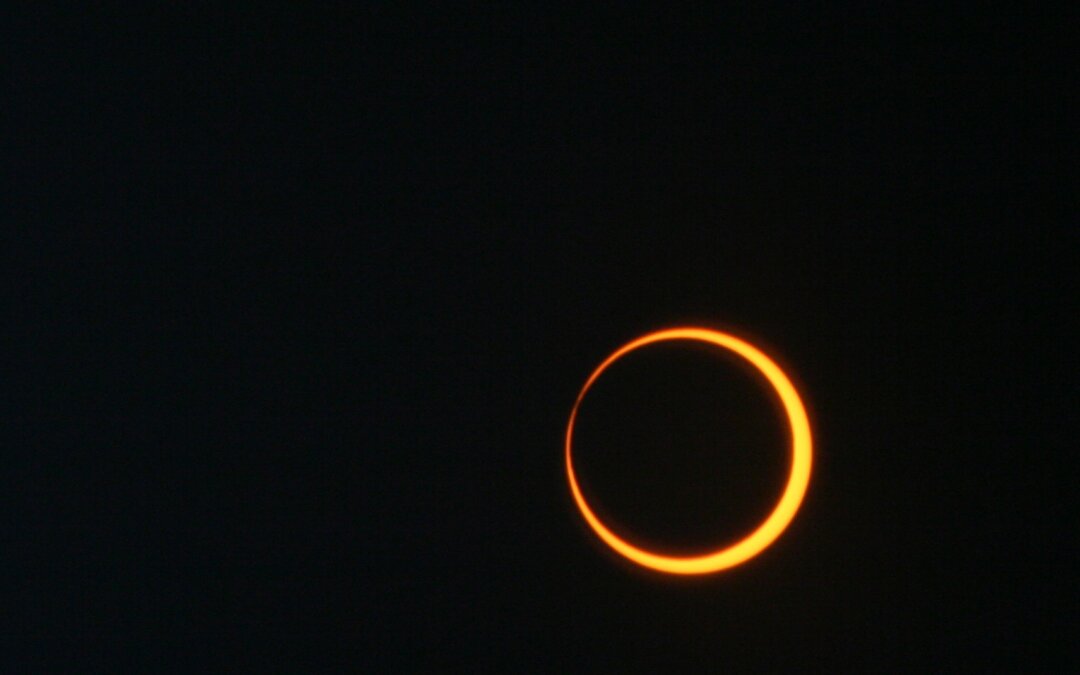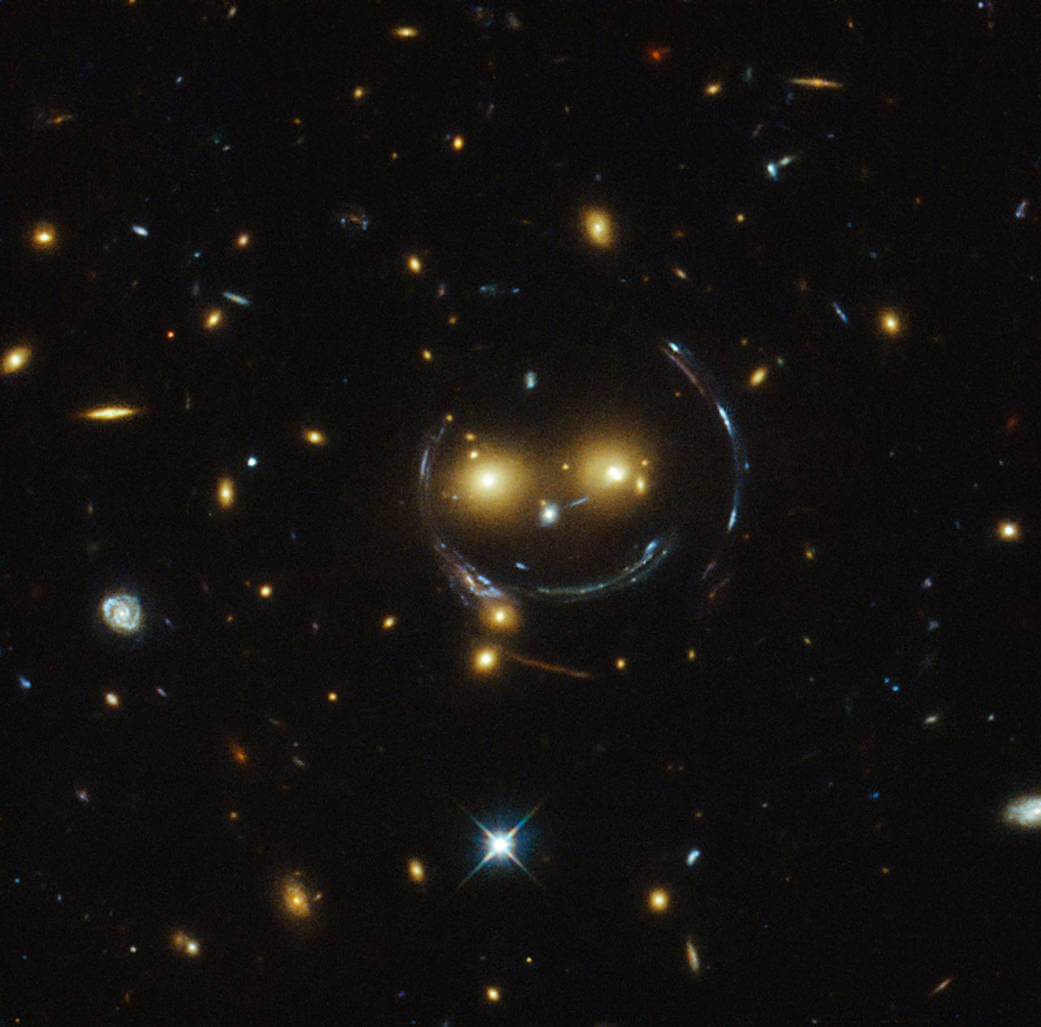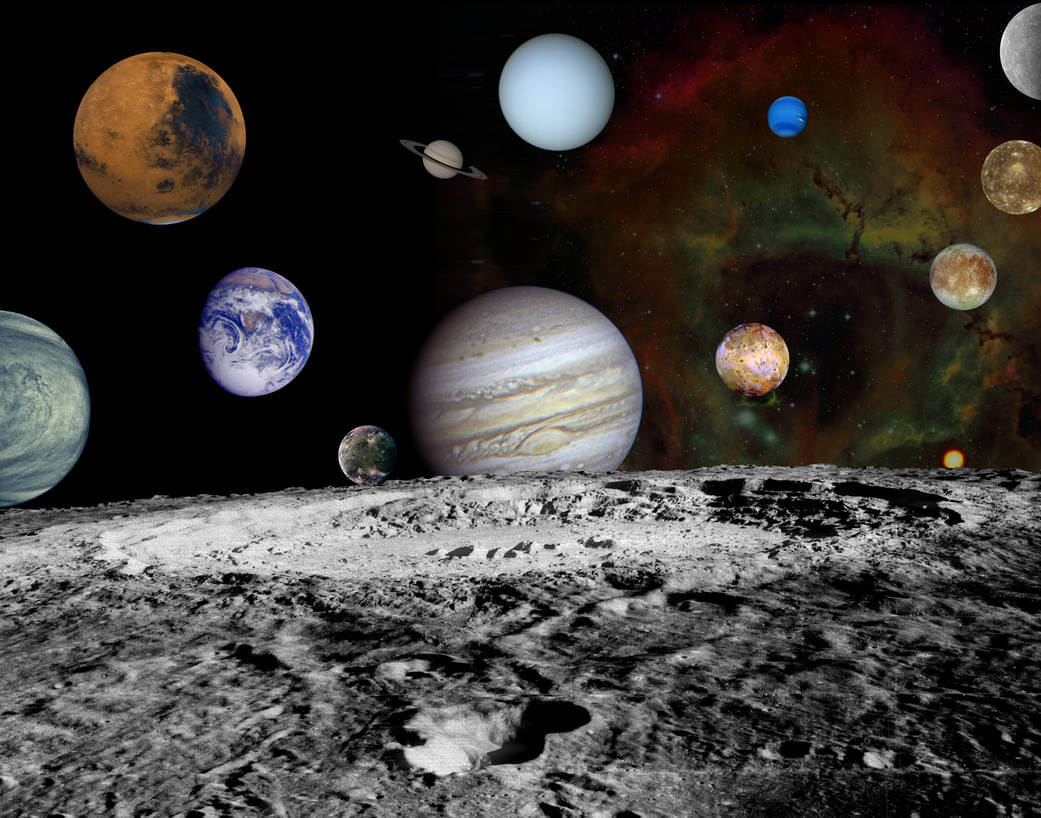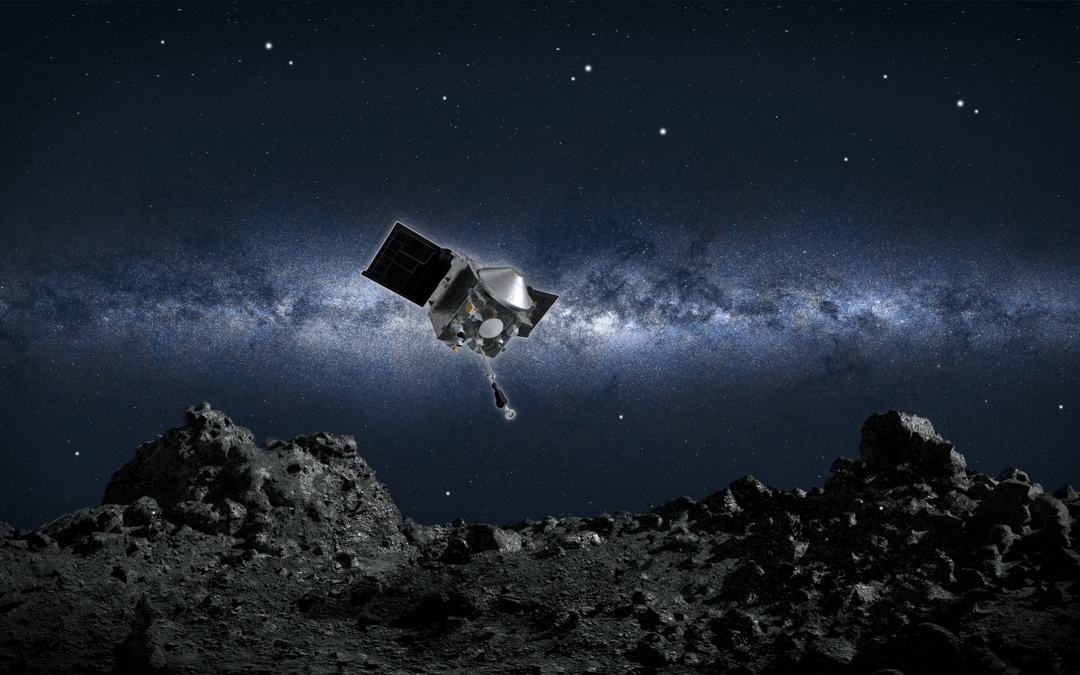You can observe a solar eclipse not once, but twice within the next year in North America. This double-whammy kicks off with an annular solar eclipse on October 14, 2023, and finishes with a total solar eclipse on April 8, 2024. Solar eclipses occur thanks to a fortunate alignment of the Moon and Sun, and can be observed quite easily (with the proper protection!). If you have a Unistellar telescope with a Smart Solar Filter, you’ll be able to get an up-close look at the first of these celestial alignments very soon!
Even if you’re not in the eclipse’s wake on October 14 (or you have bad weather, an astronomer’s worst nightmare!), you can still view the annular eclipse virtually. Join the SETI Institute and Unistellar on Facebook or Youtube for a special SETI Live event, where we will livestream the eclipse from within the path and talk with solar experts!

Credits: NASA. The umbra marks the deepest part of the moons shadow, where a total or annular eclipse occurs in the path of totality/annularity. The penumbra is the outer part of the shadow, and causes a partial eclipse where it falls.
What is a Solar Eclipse?
A solar eclipse occurs when the Moon passes in front of the Sun, as seen from Earth. This blocks the Sun’s light, casting the Earth’s surface into darkness for several minutes. Birds roost and insects may begin to sing, thinking it’s night, and the temperature will drop noticeably. Globally, eclipses usually occur several times per year, but they can only be seen in their full glory from a specific area, called the path of totality (or annularity). An area outside the path may see a partial eclipse depending on its proximity to the path.
Aside from partial eclipses, there are two main types of solar eclipses. A total solar eclipse, like the one that will be visible from North America next year, occurs when the Moon fully blocks the Sun’s disk. During total solar eclipses you can see the Sun’s corona, or hot outer atmosphere, which is normally not visible.
However, the upcoming solar eclipse of October 14, 2023 will be an annular solar eclipse, meaning the Sun will not be fully blocked. It’s still an amazing sight to behold, however, and well worth watching! An annular eclipse occurs when the Moon is directly in front of the Sun but doesn’t appear large enough to fully cover it, instead creating what’s called the “Ring of Fire,” as the Sun’s outer edge remains visible. The portion of the eclipse where the Ring of Fire is visible is called “annularity.” Leading up to annularity, onlookers will be able to view a partial eclipse as the Moon gets in position to block the Sun. When the annularity is finished, viewers will again witness a partial eclipse as the Moon moves out of the way.
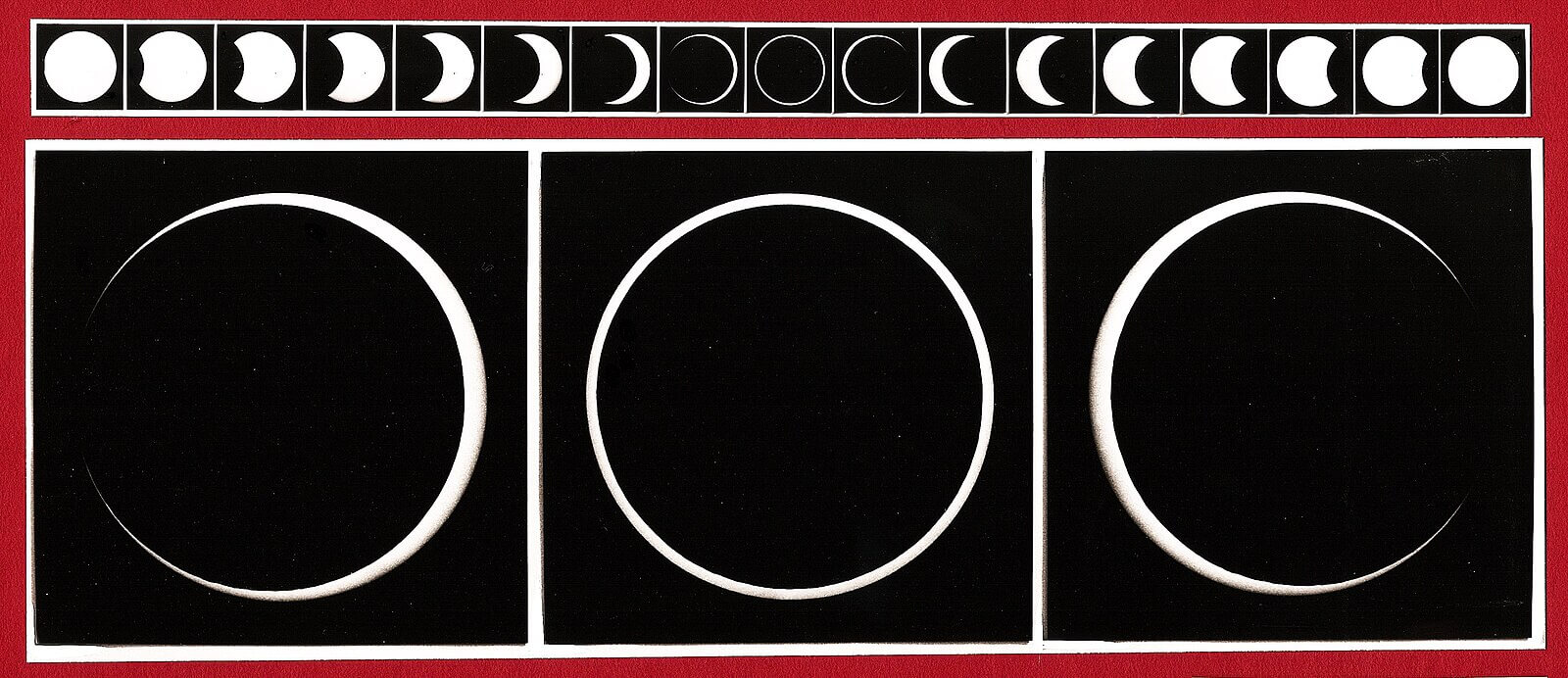
The stages of an annular eclipse. A partial eclipse occurs before and after the moon is located directly in front of the Sun’s disk. Credit: Hans Bernhard
When is the Next Solar Eclipse? From Where Can You See the Next Solar Eclipse?
The path of the upcoming annular solar eclipse will begin on the Oregon coast and move southeast, crossing Nevada, Utah, New Mexico, and Texas in the US before moving over the Gulf of Mexico. This 2023 solar eclipse will then cross Mexico’s Yucatan Peninsula and parts of Central America before sweeping across Columbia and northern Brazil.
You’ll be able to see a partial annular solar eclipse from anywhere in the United States, meaning the Sun will be at least partly covered by the Moon. The Sun will appear to be more fully covered the closer you get to the eclipse’s path, and if you’re in the path, you will see the moon fully in front of the Sun. Plus, the closer you get to the center of the path, the longer you will be able to see the Ring of Fire! At the very center of the path, annularity will last about 4.5 minutes, but it will last for a shorter time toward the edges of the path.
The partial eclipse will start around 8am PDT from the Oregon coast, but the time to start observing will change depending on location. So to see whether you’ll be able to view the annular eclipse, and when, check out NASA’s Eclipse Explorer or this resource from IntheSky.org.
It’s important to remember not to look directly at the Sun without proper eye protection at any point during an annular eclipse! Because the Sun is not fully covered, it can still harm your eyesight. You can use eclipse glasses or a solar filter for your telescope to safely view the Sun.
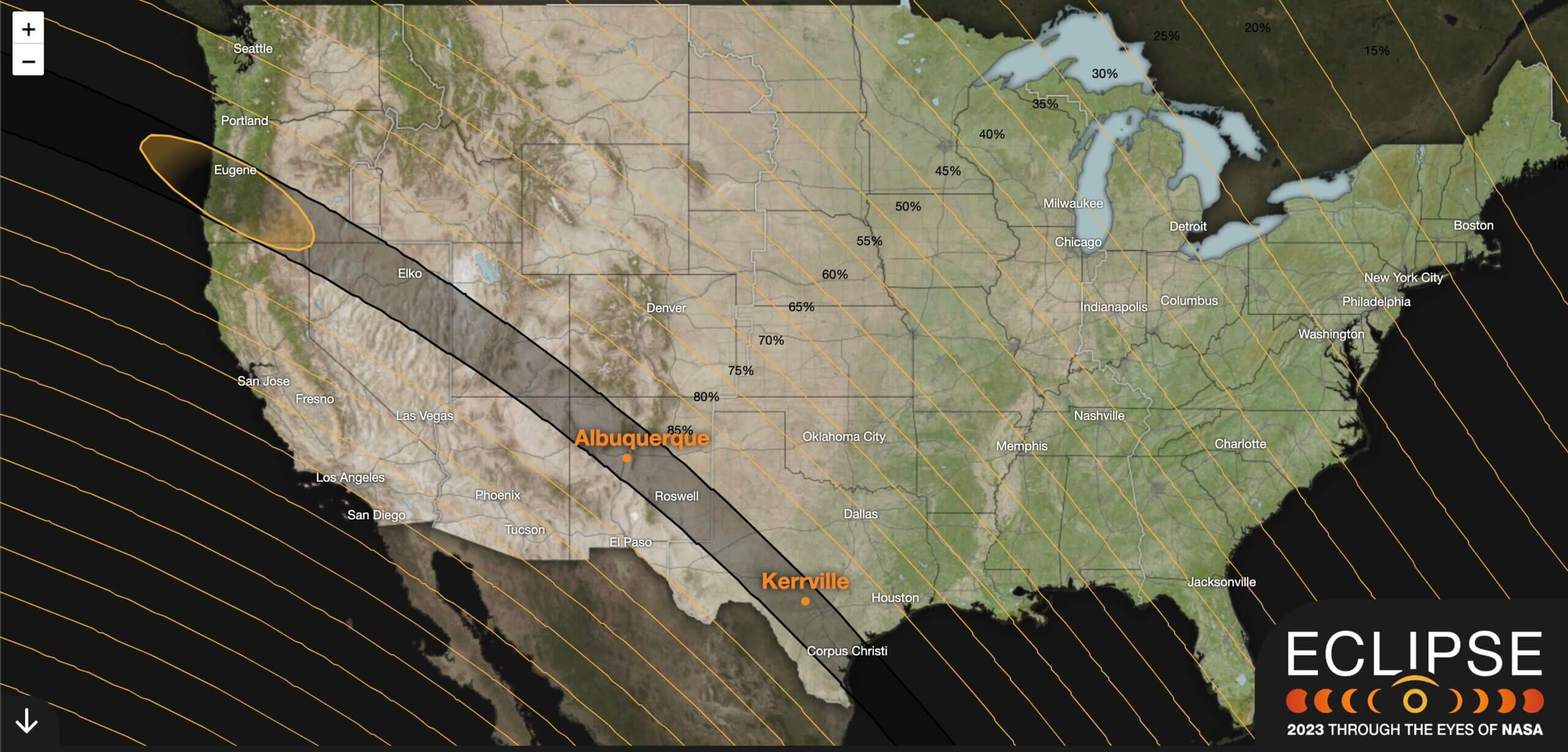
The path of the October 14, 2023 annular eclipse. The yellow circle denotes the Sun’s shadow as it begins to cross the continent. Yellow lines marked by a percentage denote how much of a partial eclipse will be visible from the area. Credit: NASA’s Eclipse Viewer.
How to Watch a Solar Eclipse With a Unistellar Telescope
A Unistellar Telescope outfitted with a Smart Solar Filter is perfect for viewing the Sun during an eclipse. You can watch the Moon slowly slide over the Sun, observe the Ring of Fire at annularity, and spy on the solar corona during a total solar eclipse.
The first step in observing the Sun with your Unistellar telescope is to make sure your App is updated to version 2.5. Then, you can prepare for the eclipse by setting up your telescope (keep the dust cap on!) and taking the following steps at least 15 minutes before the start of the eclipse from your location. If you need more instructions, you can find a detailed account of the Solar Experience setup at our FAQ Page on Solar Observations.
- Select the Sun in the App Catalog – Once connected to your telescope’s WiFi, open the Unistellar App and select the Sun. Click GoTo and you will be prompted with a short tutorial that contains the following steps. There is no need for an Orientation to select the Sun from the App Catalog.
- Check your solar filter – Make sure your Smart Solar Filter is free from scratches or holes.
- Place the solar filter – Remove the dust cap and promptly place the Smart Solar Filter on the top of the telescope.
- Manually position the telescope – Unscrew the tripod screws and manually position your telescope mount in the direction of the Sun; the structure with the motor must be to your right once you are facing the Sun. Once the telescope is facing the Sun with the structure at your right, do not forget to tighten the tripod screws.
- Start the solar observation – Click on « GoTo » again to automatically align the telescope with the Sun and track it.
You will get a confirmation message when your telescope is centered on the Sun. Now you are ready to observe the eclipse! You may want to record your screen on your smart device to see the eclipse in action.
Remember, just as it is never safe to look directly at the Sun without the proper eye protection, it is never safe for your telescope to be pointed at the Sun without the Smart Solar Filter. Exposure to the Sun without our Smart Solar Filter will cause damage to the sensor, just like it would damage your eyes.
Please share your wonderful eclipse photos with us on social media. Don’t forget to tag @Unistellar! Happy sun-gazing!
Further readings
3 Reasons to observe this month
On Jupiter: Imagine moons casting their shadows on a giant planet. Right now, Jupiter’s moons offer an exceptional show: eclipses visible even from urban areas. Each time a moon passes in front of the Sun, it creates a shadow that dances across Jupiter’s surface. Check our dedicated article to catch every passage of Io, Europa, or Ganymede.
Unistellar Community Included In Multiple Scientific Papers
Did you know Unistellar Citizen Astronomers are often cited in published scientific papers? Find out how you can contribute too!
When Is the Next Solar Eclipse, and How to Observe It With a Unistellar Telescope
An annular solar eclipse is visible from the Americas on October 14. Learn how to witness the Ring of Fire with your Unistellar Telescope!
Halloween Observing Guide: Spooky Deep-Sky Objects
These Halloween deep-sky objects will add some light to those dark, spooky nights. Treats, tricks, and telescopes await!
How Big Is the Solar System?
If the Sun were the size of a basketball, do you know how big the Earth would be? Find out how big the Solar System really is!
See OSIRIS-REx, NASA’s First Asteroid Sample Return Mission, as it Drops off Pieces of Asteroid Bennu
NASA's first asteroid return sample mission, OSIRIS-REx, is headed back towards Earth with precious cargo. Join us in observing it Sept. 24!


